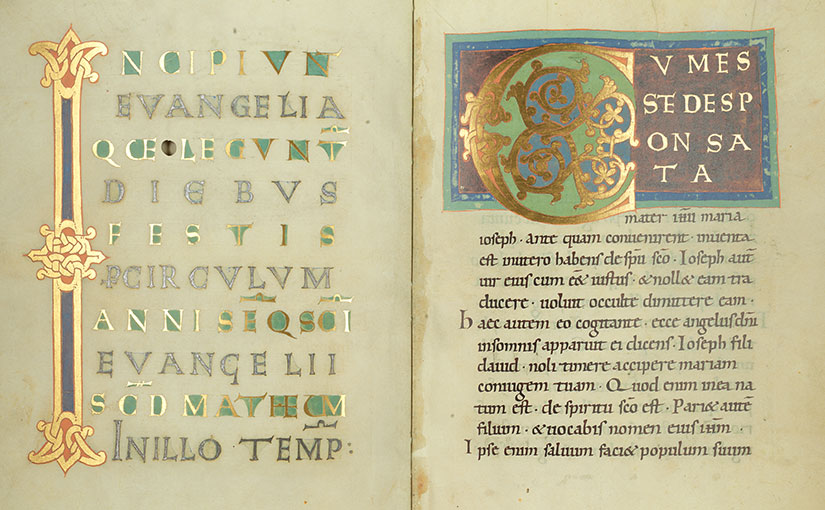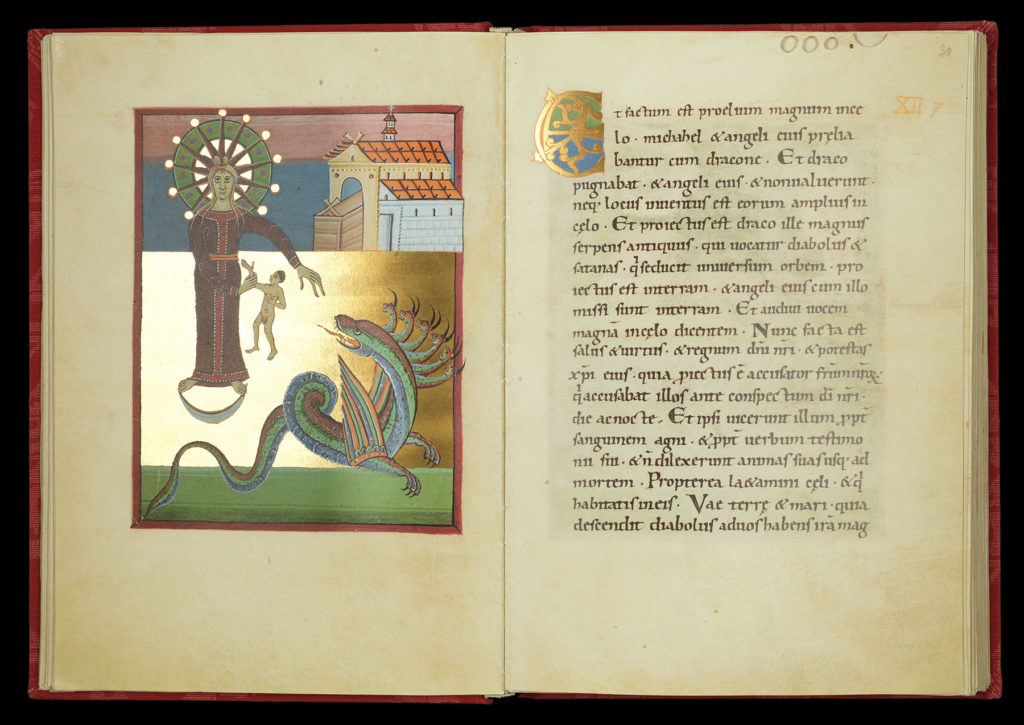by Julia Schneider, Medieval Studies Librarian
The Bamberg Apocalypse facsimile is an original-format copy of a manuscript commissioned by Otto III (980-1002 AD). After his untimely death, the manuscript was left unfinished in the scriptorium of the Benedictine Abbey of Reichenau in Southern Germany. His successor, Henry II (973-1024 AD) ordered it finished. Thus, the manuscript dates to 1000-1020.
Containing 106 leaves in total, the first fifty-seven leaves of the Bamberg Apocalypse (Bamberg, Staatsbibliothek, Msc. Bibl. 140) contain the text and images of the Apocalypse of St. John from the Bible (a.k.a., Revelation). The remaining leaves of the manuscript include gospel pericopes (extracted readings) for specific feasts. There are a hundred decorated initials throughout the manuscript along with fifty-seven images, or miniatures, forty-nine of which provide striking visual interpretations of the prophecies contained in the Apocalypse concerning the end of the world and the final judgment, all with significant gold decoration.
The image shown above, described in the facing text, depicts Apocalypse 12:1-5. The woman, who has brought forth a man child, is clothed with the sun and has the moon under her feet. The great dragon with its seven heads and ten horns looks on in the foreground. Though the text describes a red dragon, the image features a multi-colored dragon—red, gold, and purple. Standing in the background is the Church that houses the Ark of the Covenant.
There were many ornate apocalypses and apocalypse commentaries produced during the Middle Ages, and, while we do not own the manuscripts, Hesburgh Libraries’ Rare Books and Special Collections houses facsimiles of several in addition to this recently acquired version. Be sure to search “apocalypse” in our database of facsimiles for more information on these fascinating, illustrated manuscript facsimiles.

